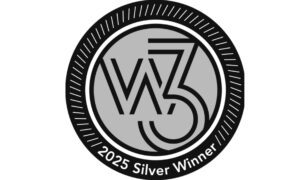Power semiconductors have quietly become one of the most consequential components enabling the tech transformations of 2025. From greener EVs and faster data centers to robust space electronics and more-efficient renewable energy infrastructure, advances in device materials, packaging, and system-level integration are unlocking capabilities that were science fiction just a few years ago. Here are five distinctive ways power semiconductors advanced technology this year — and the introduction of three companies that are helping lead the charge.
1. Wide-bandgap materials turned efficiency into scale
2025 was the year wide-bandgap (WBG) materials — chiefly silicon carbide (SiC) and gallium nitride (GaN) — moved from high-end prototypes into mainstream production for multiple markets. SiC’s ability to handle high voltages and temperatures has expanded its role beyond electric vehicles into grid inverters and industrial power systems, while GaN’s fast switching and high-frequency performance made it ideal for compact power supplies in data centers and consumer fast chargers. Major manufacturers ramped wafer-level and packaging capability to lower cost per watt, accelerating adoption across sectors.
2. Faster switching enabled new system architectures
Because GaN devices can switch far faster than traditional silicon IGBTs or MOSFETs, designers rethought entire power architectures. In 2025, that translated to smaller passive components, higher power-density converters, and reduced thermal mass — enabling thinner, lighter power systems in everything from telecom racks to aircraft electronics. Faster switching also lowers energy losses at the system level, delivering both immediate efficiency gains and long-term operational savings for cloud providers and telecom operators. Evidence of this shift was visible in major suppliers’ strategic roadmaps and product launches that emphasized GaN at scale.
3. Packaging and integrated modules improved reliability in extreme environments
Advanced packaging — including SiC and high-voltage IGBT modules with improved thermal interfaces, embedded gate drivers, and high-reliability assembly methods — pushed power semiconductors into harsher environments. This mattered for aerospace, defense, and space applications where Powerex, a U.S. power semiconductor manufacturer, has a strong presence with ITAR-registered production and mission-critical module offerings. Powerex’s product lines (IGBTs, SiC modules, rectifiers, and custom assemblies) exemplify how integration and ruggedization let power devices serve extreme-condition applications while meeting military and aerospace qualifications.
4. AI and data center demands drove smarter power management
Generative AI and high-performance computing booms in 2025 increased demand for highly efficient, dynamic power supplies. Power semiconductor advances enabled converters and voltage-regulation modules with finer granularity and faster transient response, so data centers could scale compute more economically and with less wasted energy. Manufacturers coupled power devices with smarter gate drivers and system firmware, letting operators perform power-aware workload scheduling and to squeeze more performance per watt out of racks. Industry trend reports clearly link GenAI growth to surging interest in GaN and SiC for data-center power stages.
5. Supply-chain and manufacturing shifts lowered barriers to adoption
As demand spiked, companies invested heavily in wafer fabs, 300mm process readiness for GaN, and vertically integrated supply chains. Infineon, for example, publicly emphasized manufacturing scale for GaN as it pushed toward higher-volume production lines in 2025, signaling a tipping point where per-unit costs fall enough for mass adoption across industries. At the same time, investment and restructuring moves by silicon-carbide specialists helped stabilize supply and accelerate technology commercialization. These manufacturing shifts are the silent enabler that turned lab breakthroughs into deployed systems.
Companies making an impact in 2025
Powerex — Based in the United States, Powerex continued to serve mission-critical sectors (aerospace, defense, medical, and industrial) with rugged discrete devices, SiC and IGBT modules, and custom power assemblies. Its ITAR registration and local manufacturing footprint made it a key supplier for applications that require both performance and traceable domestic production.
Infineon — Infineon doubled down on GaN and advanced packaging in 2025, investing in production readiness and strategic partnerships to move GaN from niche to mainstream applications, particularly in data-center and EV charging infrastructure. Their roadmaps and announcements signaled confidence that GaN would reach important adoption tipping points this year.
Wolfspeed — As a major SiC specialist, Wolfspeed’s products are central to EV inverters, charging systems, and industrial converters. In 2025 the company underwent financial restructuring to strengthen operations and maintain SiC supply momentum — a move that industry watchers said would help stabilize the silicon-carbide supply chain during a period of rapid market growth.
Why this matters going forward
The 2025 advances in the semiconductor industry are more than incremental component upgrades — they’re foundational. Higher efficiency, faster switching, and more robust packaging reduce energy consumption at scale, shrink system size, and open new product form factors. That ripples across industries: cleaner grids with less transmission loss, lighter electric platforms with longer range, and data centers that can host more powerful AI workloads without a proportional rise in power draw. As manufacturing catches up to material and design innovation, expect the pace of practical deployments to accelerate even further.
Power devices aren’t glamorous, but in 2025 they quietly kept the lights on for the next wave of technological change — and three kinds of progress made that possible: material innovation (GaN/SiC), smarter system integration, and the industrial muscle to produce at scale. Companies like Powerex, Infineon, and Wolfspeed illustrate how engineering, manufacturing, and strategic realignment together turned laboratory promise into real-world impact this year.


































